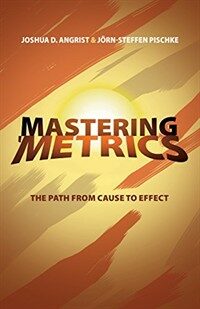단행본
Agent-based models in economics: a toolkit
- 청구기호
- 330.015195 AGE2018
- 발행사항
- Cambridge : Cambridge University Press, 2018
- 형태사항
- 241 p
- 서지주기
- Includes bibliographical references and index
- ISBN
- 9781108414999
소장정보
| 위치 | 등록번호 | 청구기호 / 출력 | 상태 | 반납예정일 |
|---|---|---|---|---|
이용 가능 (1) | ||||
| 한국노동연구원 | 00009752 | 대출가능 | - | |
이용 가능 (1)
- 등록번호
- 00009752
- 상태/반납예정일
- 대출가능
- -
- 위치/청구기호(출력)
- 한국노동연구원
목차
List of Figures = xi
List of Tables = xiii
List of Contributors = xiv
Preface = xvii
1 Introduction = 1
1.1 Hard Times for Dr Pangloss = 1
1.2 The Complexity View = 3
1.3 Heterogeneity in a Neoclassical World = 4
1.4 Agent-Based Models (ABMs) = 6
1.5 Plan of the Book = 8
2 Agent-Based Computational Economics : What, Why, When = 10
2.1 Introduction = 10
2.2 Features of Agent-Based Models = 11
2.2.1 Scope of Agent-Based Models = 12
2.2.2 The Whole and Its Parts = 13
2.2.3 The Dual Problem of the Micro-Macro Relationship = 14
2.2.4 Adaptive vs. Rational Expectations = 15
2.2.5 Additional Features of Agent-Based Models = 17
2.3 The Development of ACE = 20
2.3.1 Evolutionary Roots = 20
2.3.2 The Santa Fe Perspective : The Economy as an Evolving Complex System = 21
2.3.3 AB Models as Dynamic Microsimulations = 24
2.3.4 The Experimental Machine = 25
2.4 Why Agents = 27
2.5 An Ante Litteram Agent-Based Model : Thomas Schelling''s Segregation Model = 29
2.6 Conclusions = 32
3 Agent-Based Models as Recursive Systems = 33
3.1 Introduction = 33
3.2 Discrete-Event vs. Continuous Simulations and the Management of Time = 33
3.3 The Structure of an AB Model = 37
3.4 Obtaining Results in AB Models = 41
4 Rationality, Behavior, and Expectations = 43
4.1 Introduction = 43
4.2 Certainty = 44
4.3 Uncertainty = 45
4.3.1 Risk Neutrality = 46
4.3.2 Risk Aversion = 47
4.3.3 Optimal Choice in a Multi-Period Setting = 50
4.4 Adaptation in Expectation Formation = 55
4.5 Riding at Full Gallop through the History of Macroeconomics = 56
4.5.1 The Neoclassical-Keynesian Synthesis = 57
4.5.2 Expectations Enter the Scene = 58
4.5.3 Adaptive Expectations = 59
4.5.4 Rational Expectations = 62
4.5.5 The New Neoclassical Synthesis = 68
4.6 The Limits of Rational Expectations = 71
4.7 Heterogeneous Expectations : A Very Simple Introduction = 72
4.7.1 Heterogeneous-Biased Expectations = 72
4.7.2 A Convenient Special Case : Two Types = 74
4.7.3 Heterogeneous Adaptive Expectations = 76
4.8 Heterogeneous Expectations in ABMs = 76
4.9 Conclusions = 79
5 Agents'' Behavior and Learning = 81
5.1 Introduction = 81
5.2 Full and Bounded Rationality = 82
5.2.1 Empirical Microfoundations of Individual Behavior = 85
5.2.2 Agents'' Behavior and Heuristics = 90
5.3 Learning = 93
5.3.1 Individual Learning 1 : Statistical Learning = 95
5.3.2 Individual Learning 2 : Fitness Learning = 97
5.3.3 Social Learning = 105
5.3.4 Individual vs. Social Learning = 107
5.4 Conclusions = 108
6 Interaction = 109
6.1 Introduction = 109
6.2 Modeling Interactions = 110
6.2.1 Local Exogenous Interaction = 114
6.2.2 Endogenous Interaction = 118
6.3 Networks : Basic Concepts and Properties = 125
6.4 Static and Dynamic Networks = 133
6.4.1 Static Networks = 133
6.4.2 Dynamic Networks = 137
6.5 Conclusions = 141
7 The Agent-Based Experiment = 143
7.1 Introduction = 143
7.2 Long-Run and Transient Equilibria = 144
7.2.1 Definitions = 144
7.2.2 Uniqueness and Multiplicity of Equilibria = 146
7.2.3 Implications of Stationarity and Ergodicity = 150
7.3 Sensitivity Analyis of Model Output = 151
7.3.1 Settings for SA = 152
7.3.2 Strategies for SA = 152
7.3.3 SA and AB Modelling : Some Applications = 156
7.3.4 A Simple Example : SA on a Bass Diffusion Model with Local Interaction = 156
7.4 Conclusions = 161
8 Empirical Validation of Agent-Based Models = 163
8.1 Introduction = 163
8.2 The Methodological Basis of Empirical Validation = 165
8.2.1 Tractability vs. Accuracy = 166
8.2.2 Instrumentalism vs. Realism = 167
8.2.3 Pluralism vs. Apriorism = 167
8.2.4 The Identification Problem = 168
8.3 Input Validation of Agent-Based Models = 169
8.4 Output Validation of Agent-Based Models = 172
8.5 Qualitative Output Validation Technqiues = 176
8.5.1 The Indirect Calibration Approach = 178
8.5.2 The History-Friendly Approach = 180
9 Estimation of Agent-Based Models = 183
9.1 Introduction = 183
9.2 Taking the Model to the Data = 185
9.2.1 Comparing Apples with Apples = 185
9.2.2 Preliminary Tests = 187
9.2.3 Simulation-Based Estimation = 189
9.2.4 Consistency = 191
9.2.5 Calibration vs. Estimation = 192
9.3 Simulated Minimum Distance = 195
9.3.1 The Method of Simulated Moments = 195
9.3.2 Ergodicity and an Application to a Simple AB Model = 203
9.4 Bayesian Estimation = 210
9.4.1 Estimating the Likelihood = 211
9.4.2 Sampling the Posterior Distribution = 214
9.4.3 Approximate Bayesian Computation = 216
9.4.4 ABC Estimation of the Segregation Model = 219
9.5 Conclusions = 221
10 Epilogue = 222
Bibliography = 224
Index = 240



